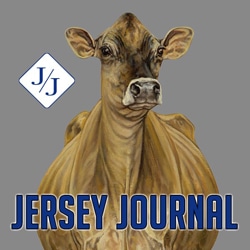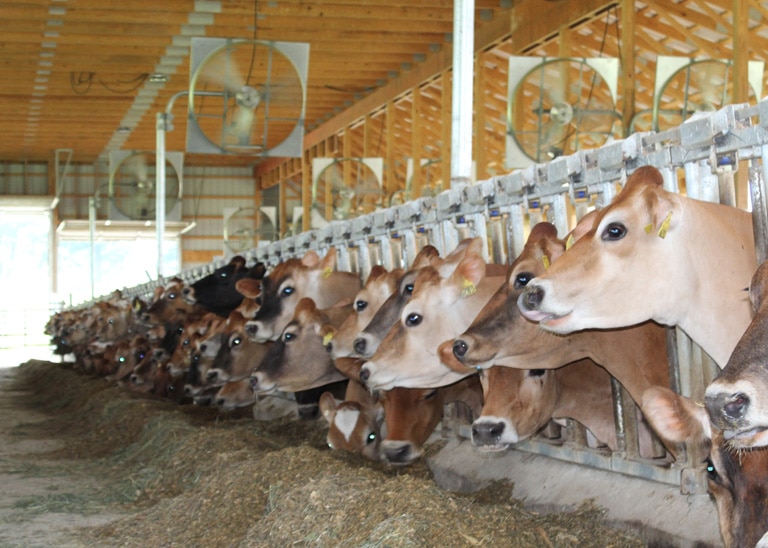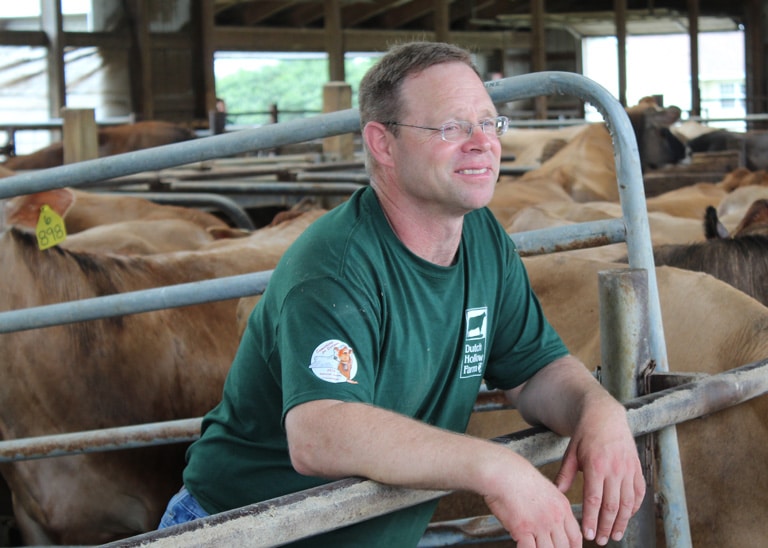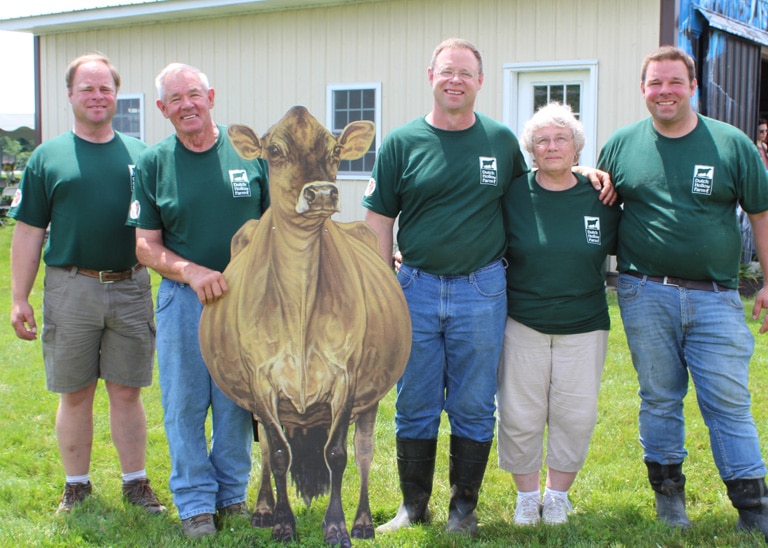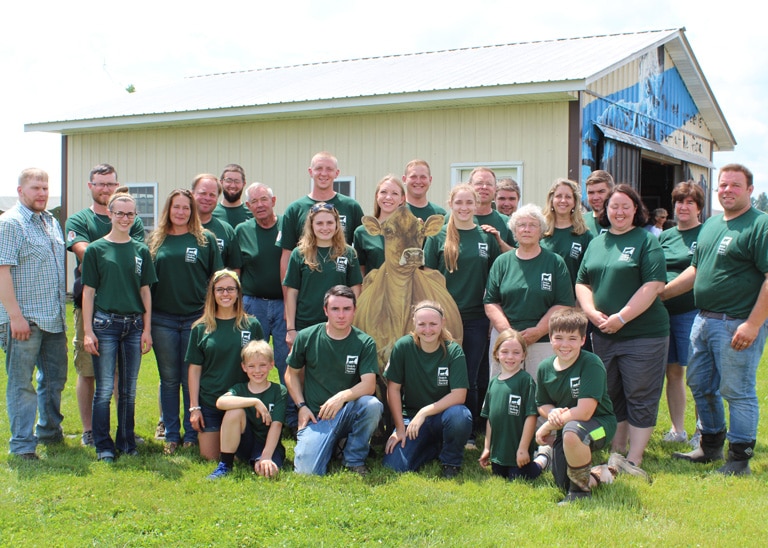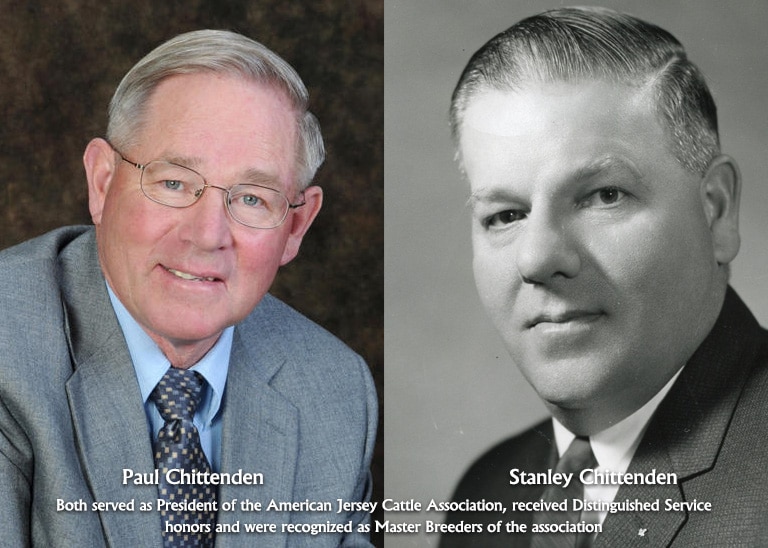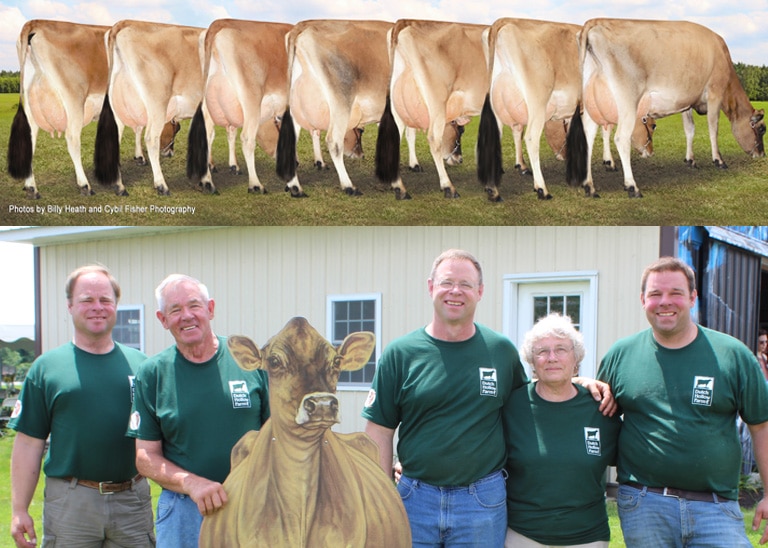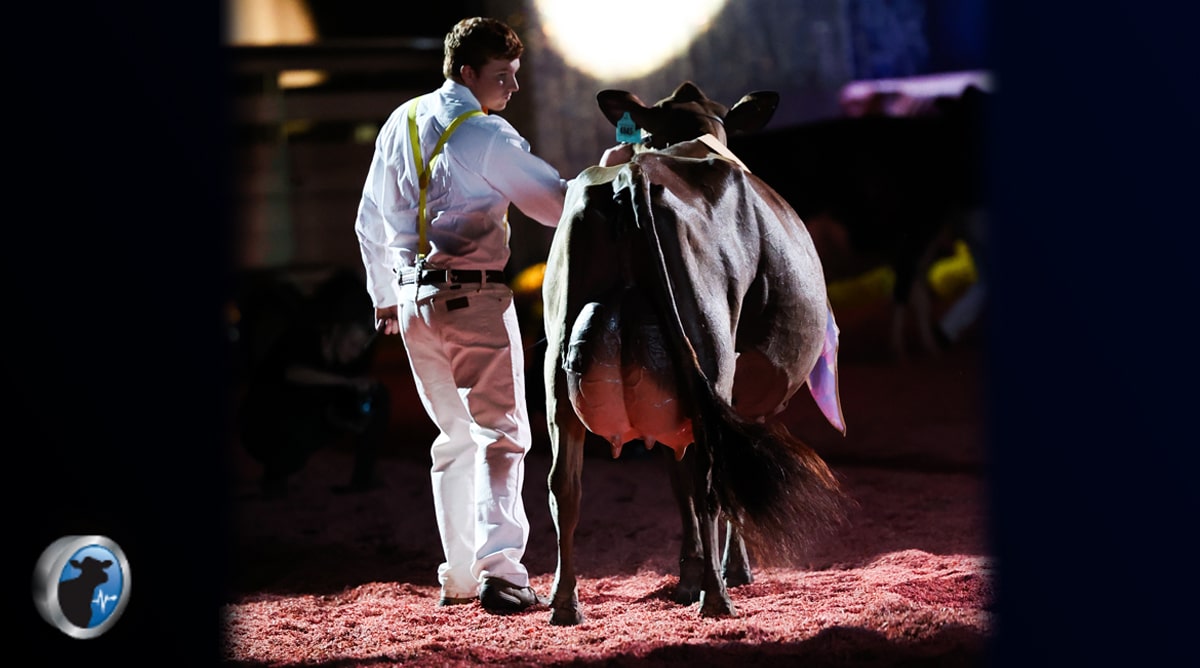Catching Up With AJCA Master Breeders
Welcome to the Legacy Series featuring Master Breeders of the American Jersey Cattle Association (AJCA). Over the next several months, the Jersey Journal will be sharing stories with you previous recipients of this prestigious award. We have asked each of them a series of questions covering topics from philosophy, farm history, breeding questions and even what they might be if they had not taken the route of Jersey breeder. We hope you enjoy getting to know these Jersey breeders and their advice and thoughts to the Jersey world today.
Dutch Hollow Farm – Schodack Landing, New York
The Chittenden Family ~ 2012 Master Breeders
Farm history and the meaning of being a Master Breeder to the family:

Dutch Hollow was started in 1976 when we moved from the family farm, Fair Weather Farm, to our present location. The move included 55 milk cows plus young stock. During the first year we had the opportunity to add another 15-20 head from a close family friend that was retiring.
To be nominated and selected to receive the Master Breeder Award by our fellow Jersey breeders was a tremendous honor and probably could be considered our biggest success in the Jersey business, followed by receiving the National Dairy Shrine Distinguished Dairy Cattle Breeder Award in 2014. Equally meaningful was that our father/grandfather had also received the award previously. His philosophy on breeding functionally sound profitable dairy cows became the program at Dutch Hollow as well. Also, as a pioneer in breeding polled Jerseys, that became part of the program at Dutch Hollow also. Another Master Breeder that had a lot of influence on our breeding thoughts were Col. and Mrs. Wilde at High Lawn. Located just a short distance away their breeding philosophy was much the same as our forefather and we had the opportunity to develop a great relationship with them.
Our Story
Certainly, the influence of those mentors played a key role in our choice to make Jerseys our business. Another major factor was the direction our Jersey leadership was turning our breed, more milk and marketing the protein that they produced, Cheese would be the savior of the dairy industry. In 1980 we, along with 4 other family members, with assistance from National All-Jersey, Inc. (NAJ) staff began shipping our milk to a cheese plant and received a premium for the protein, that’s 20 years before component pricing was included in the Federal Orders. Our co-op wasn’t happy about it, but we told them we were going to do it with or without them. They chose to work with us.
As Brian and Alan returned to the farm full time it became very evident, we needed to expand the business. As we increased numbers and seriously overcrowded our facilities, we started thinking about building additional or new facilities. The loan officer we were working with was a bit Holstein oriented and kept putting us off. We finally told his boss that if we didn’t get somebody, we could work with we were going to switch banks. We had a new loan officer the next week and plans were soon on the table for a new barn and parlor. We moved into 1/2 of the new barn in the spring of 1995 and the second 1/2 in June just 2 days before hosting the National Heifer Sale on the front lawn. The herd average jumped 2,000 lbs. in the first year.
Breeding Program
Our breeding program at Dutch hollow mirrors what we learned from our mentors – functionally sound, profitable dairy cows. Our goal has never been to breed show winners. We enjoy doing some showing but the ones we show must fit into the commercial environment the rest of the herd lives in.
 One breeding tool that has influenced most of our mating decisions is the “aAa” program. Early on we had the opportunity to work with Bill Weeks who created the program and then later with other analysts. It is not about hitting the occasional home run but to consistently get on base. We like cows with enough width and strength in their front ends to hold their own at the feed bunk and enough width and length in their rear ends to hang an udder from so high that volumes of milk don’t create a problem for our employees in the milking parlor. The changes Jersey made from the old classification program to the present Type Traits Appraisal program provided breeders with information based on what a particular bulls daughter looked like on the average. Now with the advances in technology we have genomic indicators to tell us what a bull’s daughters should look like. We try to use as much of this information as possible but in the end, we believe “cow sense” and knowledge of the herd and the cow families are important ingredients in our success as breeders.
One breeding tool that has influenced most of our mating decisions is the “aAa” program. Early on we had the opportunity to work with Bill Weeks who created the program and then later with other analysts. It is not about hitting the occasional home run but to consistently get on base. We like cows with enough width and strength in their front ends to hold their own at the feed bunk and enough width and length in their rear ends to hang an udder from so high that volumes of milk don’t create a problem for our employees in the milking parlor. The changes Jersey made from the old classification program to the present Type Traits Appraisal program provided breeders with information based on what a particular bulls daughter looked like on the average. Now with the advances in technology we have genomic indicators to tell us what a bull’s daughters should look like. We try to use as much of this information as possible but in the end, we believe “cow sense” and knowledge of the herd and the cow families are important ingredients in our success as breeders.
Influential Bulls and Cows
When we look at the development of the herd, some early bulls that made an impact were Top Brass, Berretta, Lester and more recently Valentino. Along with them would be a few home bred bulls like Choice-P, Imagination-P and of course Oliver-P. On the female side certainly the cow that impacted our herd early on and continues to today would be Kamefield Observer Mischief-P. Mischief was purchased as a bred heifer the first summer we were in business. What we could refer to as the “M” family as well as our “Charity” or “Cherish” family both descend from Mischief-P. Her influence, not just in our herd, but in the breed through the many bulls placed in A.I. put her in an elite class. She could well be the most influential polled cow in the breed. Another of our favorites was SC Millie, purchased in the 1999 Cedarcrest Sale. Millie went on to score E-93% and made a string of 20,000lb records and became one of the breed’s high lifetime producers. Millie had 16 progeny born at Dutch Hollow and the family still continues to produce some of our best females along with several bulls in AI including Glynn Valentino Marcin and Glynn Headline News. Our “Lee” family and our “H” family are 2 other families that have had a major influence on the female side as well as placing bulls in AI such as Honour-P and Evolution. Then there is the “Diva” family. So many production leaders have been bred from this family.
Impact on the industry
Much has changed in the Jersey business and the dairy industry in general since the Chittenden family acquired their first Jersey in 1925. In those days, the Jersey enjoyed great popularity but along came research that said butter was bad for you. At the same time the population boom demanded more fluid milk and the black and whites were about to take over the industry. The forward-thinking Jersey leadership realized that if the breed didn’t increase production it would soon be just a hobby breed. The creation of the “All Jersey Queen of Quality” label promoting the nutritional values of Jersey milk provided new markets for Jersey cattle. As cheese became more popular, Jersey leadership jumped on the protein advantage that Jersey enjoyed. Jersey staff worked with numerous cheese makers across the country to create protein markets for groups of Jersey breeders which led eventually to the inclusion of component pricing in the Federal Order system. This again created more interest in Jerseys and opened new markets for Jersey cattle.
The value of Jersey components and the efficiencies of the Jersey cow are key reasons for the tremendous breed growth we have enjoyed. More recently with the many base programs instituted by co-ops across the country, we have watched many dairymen trading black and white cows for Jerseys. They can ship more pounds of components and still stay within their base for fluid. There are some of us who are old enough to remember being harassed by our Holstein counterparts “too poor to own a real cow and too proud to own a goat” but who is smiling now! The component and feed efficiency advantages that Jersey has will only encourage more of the large commercial dairies to look at adding or converting to Jerseys as margins in our business become tighter.
Looking ahead
Sixty years ago, our forefather, Stanley Chittenden was milking around 300 cows at Fair Weather Farm. At the time that was one of the biggest herds on test in the state of New York. A lot has changed since then. Today there are numerous herds milking 1,000 to several thousand cows in New York. Presently we farm land on 13 different farms that were milking cows when we moved to the area in 1976. The economies of scale will only continue to drive the expansion of the average commercial dairies. At the same time, the technology we have available through genomic testing and cow tracking combined with less actual personal contact with the herd will change how mating decisions are made. (how long before we present the “master breeder award” to a computer?)
the area in 1976. The economies of scale will only continue to drive the expansion of the average commercial dairies. At the same time, the technology we have available through genomic testing and cow tracking combined with less actual personal contact with the herd will change how mating decisions are made. (how long before we present the “master breeder award” to a computer?)
Regardless of how big the herds grow or how the mating decisions are made we believe the future of the Jersey cow is bright. With 70% of the milk we produce in this country going into manufactured products, the production of milk solids without the excess fluid and the efficient conversion of feed to produce those solids will only increase the demand for our little brown cow.
The role of the association in our herd
The programs of USJersey are something we were born into. Classification/appraisal, DHIR, REAP, Jersey Journal, and Project Equity are all programs that our forefathers participated in and we never thought twice about following the tradition. The programs provided us with information on our herd to help make mating decisions, to help market excess stock, and to let us compare ourselves to other breeders. The Jersey Journal has provided a means to tell our fellow breeders and potential customers about our favorite cows and cow families, sale consignments, and the continuous promotion of those top females certainly helped create the opportunity to market over 80 bulls into A.I. We are proud to be long-time contract advertisers. Our involvement with NAJ and Project Equity helped initiate the protein market we were able to create 40 years ago.
As we look to the future, it is particularly rewarding to have a third generation becoming involved in the management here at Dutch Hollow knowing that like the 2 older generations, it is their passion. They take as much pride in what has been accomplished as the older generations. They are involved with some of the mating decisions, they are good listeners and they often can be found studying pedigrees or checking out the Green Book.
Fun facts about the owners:
 Now for the fun– If Grandpa could bring back one cow from the past it would be Fair Weather Superb Rebecca-P, the first 40 lbs. two-year-old he ever had, and he would breed her to Oliver-P but I might prefer a PP bull instead of a heifer.
Now for the fun– If Grandpa could bring back one cow from the past it would be Fair Weather Superb Rebecca-P, the first 40 lbs. two-year-old he ever had, and he would breed her to Oliver-P but I might prefer a PP bull instead of a heifer.
And, if he had not chosen to milk cows for a living he probably would be working for Jersey holding a coffee cup and scoring cows alongside Ron Mosser.
